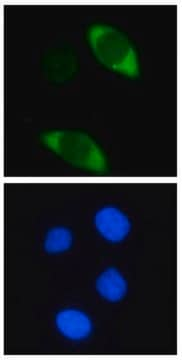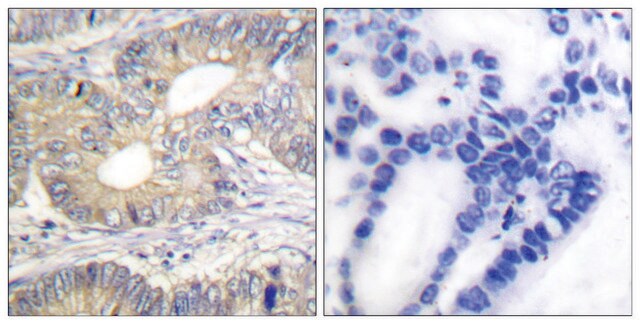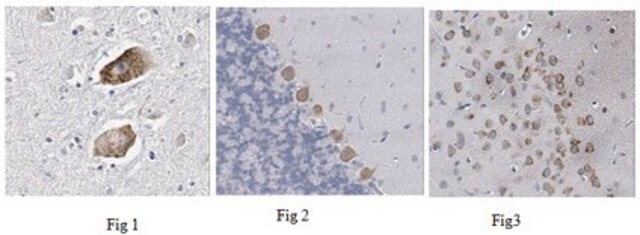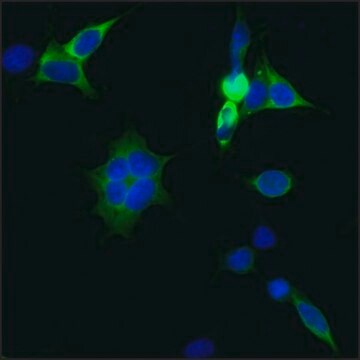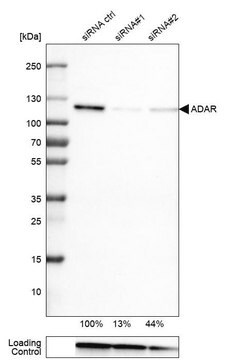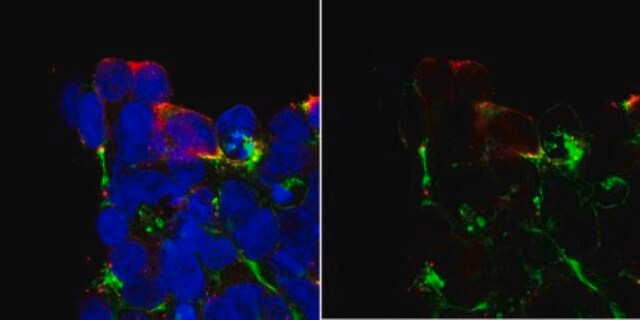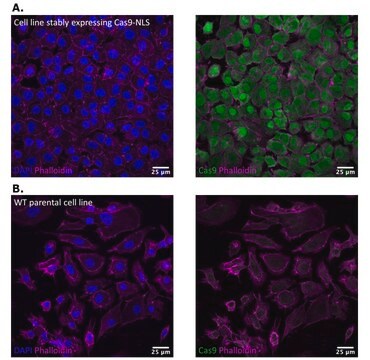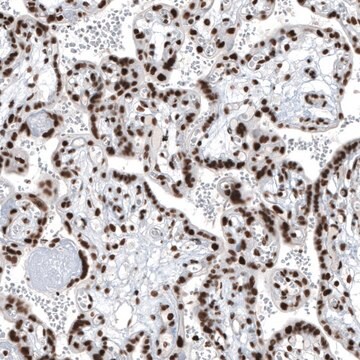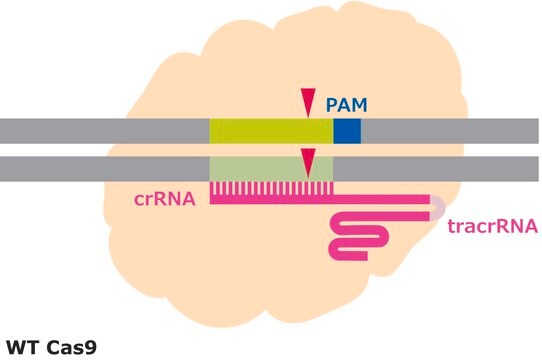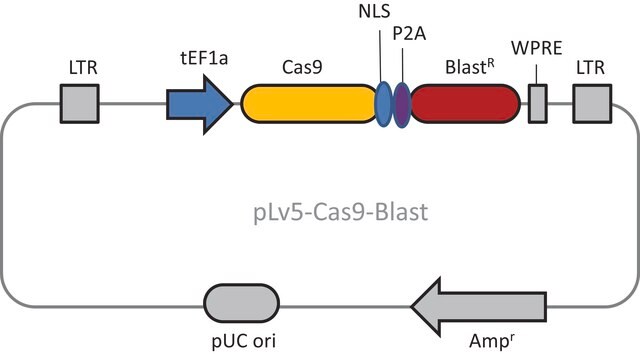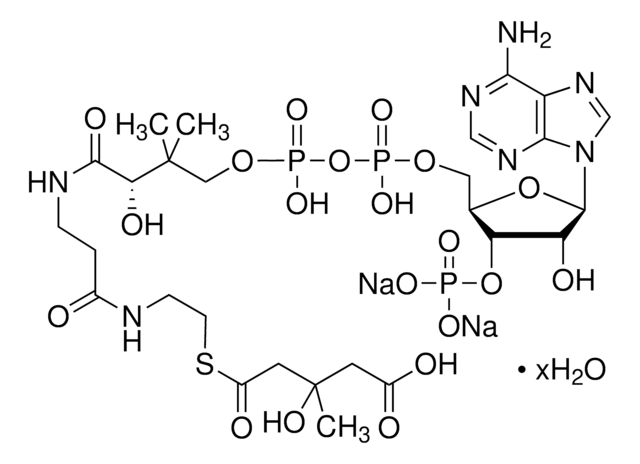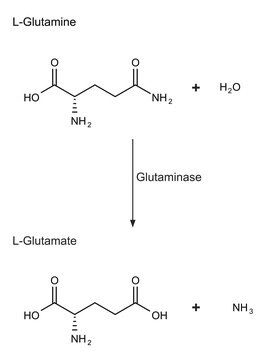Kluczowe dokumenty
SAB4200701
Anti-CRISPR/Cas9 antibody, Mouse monoclonal
clone 7A9-3A3, purified from hybridoma cell culture
Synonim(y):
CRISPR-associated protein-9 nuclease, Crisper, Crispr RNA
About This Item
Polecane produkty
pochodzenie biologiczne
mouse
Poziom jakości
forma przeciwciała
purified from hybridoma cell culture
rodzaj przeciwciała
primary antibodies
klon
7A9-3A3, monoclonal
Postać
buffered aqueous solution
opakowanie
antibody small pack of 25 μL
stężenie
~1 mg/mL
metody
immunoblotting: 1-2 μg/mL using whole extracts of human HEK-293T cells over-expressing CAS9 protein
immunofluorescence: 1-2 μg/mL using human HEK-293T cells over-expressing CAS9 protein.
immunoprecipitation (IP): 5-10 μg using whole extract of human HEK-293T cells over-expressing CAS9 protein
izotyp
IgG1
Warunki transportu
dry ice
temp. przechowywania
−20°C
docelowa modyfikacja potranslacyjna
unmodified
Opis ogólny
The Cas9 endonuclease can be engineered with a single gRNA, directing a DNA double-strand break (DSB) at a desired genomic location. Similar to DSBs induced by zinc finger nucleases (ZFNs), the cell then activates endogenous DNA repair processes, either non-homologous end joining (NHEJ) or homology-directed repair (HDR), to heal the targeted DSB. In comparison to other genome-editing technologies such as designer zinc fingers (ZFs), transcription activator–like effectors (TALEs) and homing meganucleases, the CRISPR/CAS9 system is a scalable, affordable and easy to engineer. Therefore, the anti-CRISPR/CAS9 antibody can be a useful tool for detecting CRISPR/CAS9 positively transfected cells, reveling DSB sites in the genome and in ChIP (Chromatin Immunoprecipitation) related assays.
Immunogen
Zastosowanie
Działania biochem./fizjol.
Postać fizyczna
Przechowywanie i stabilność
Inne uwagi
In order to obtain best results in different techniques and preparations we recommend determining optimal working concentration by titration test.
Oświadczenie o zrzeczeniu się odpowiedzialności
Nie możesz znaleźć właściwego produktu?
Wypróbuj nasz Narzędzie selektora produktów.
Kod klasy składowania
12 - Non Combustible Liquids
Klasa zagrożenia wodnego (WGK)
WGK 1
Temperatura zapłonu (°F)
Not applicable
Temperatura zapłonu (°C)
Not applicable
Certyfikaty analizy (CoA)
Poszukaj Certyfikaty analizy (CoA), wpisując numer partii/serii produktów. Numery serii i partii można znaleźć na etykiecie produktu po słowach „seria” lub „partia”.
Masz już ten produkt?
Dokumenty związane z niedawno zakupionymi produktami zostały zamieszczone w Bibliotece dokumentów.
Klienci oglądali również te produkty
Nasz zespół naukowców ma doświadczenie we wszystkich obszarach badań, w tym w naukach przyrodniczych, materiałoznawstwie, syntezie chemicznej, chromatografii, analityce i wielu innych dziedzinach.
Skontaktuj się z zespołem ds. pomocy technicznej